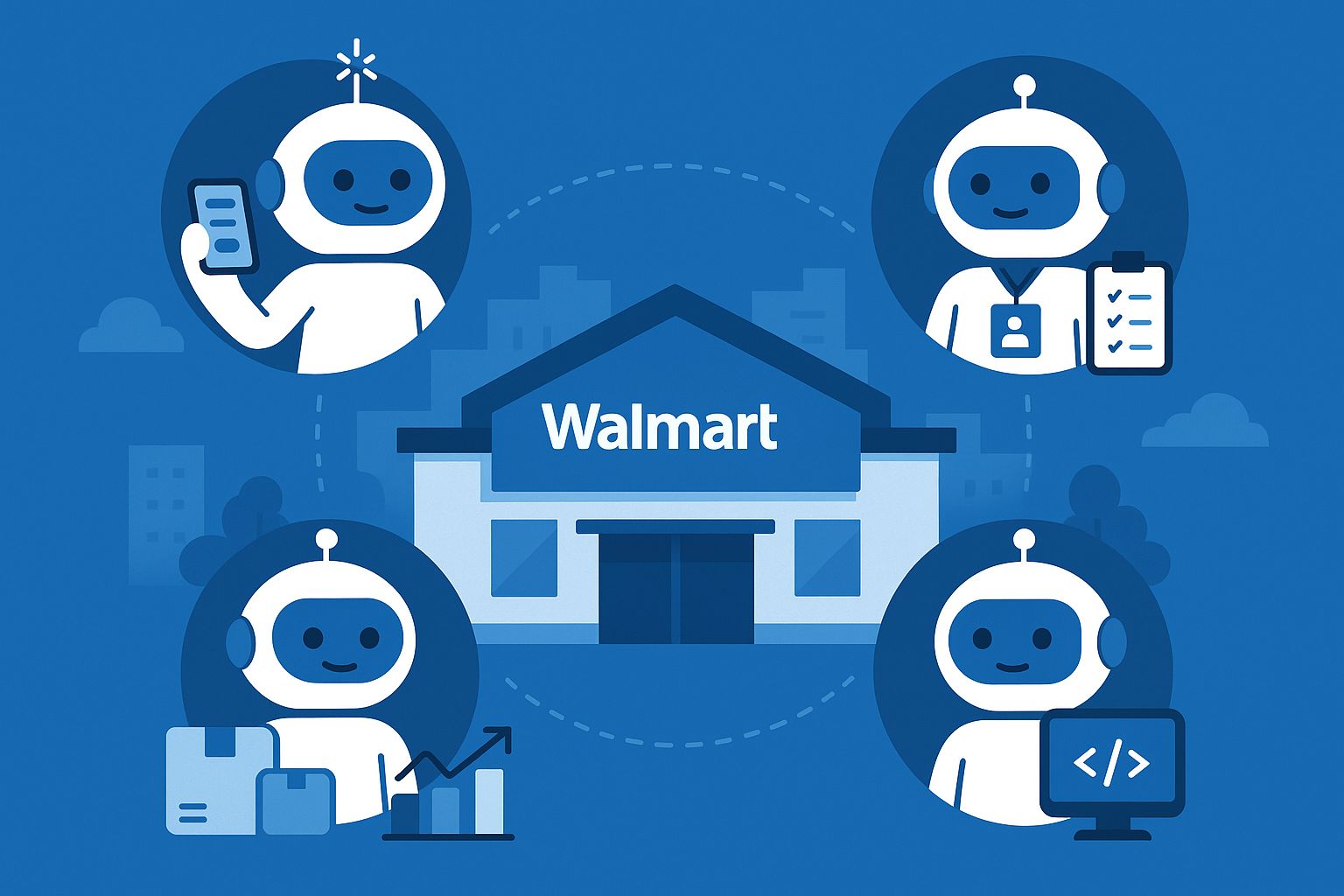- The Midas Report
- Posts
- Walmart Bets Big on Unified AI Super Agents
Walmart Bets Big on Unified AI Super Agents
3 min read.

Walmart just unveiled a high stake initiative: a suite of four AI powered super agents designed to unify every AI experience across customers, employees, suppliers, and developers. This marks a turning point in retail tech as Walmart positions agentic AI as its central interface for growth, efficiency, and user centric design.
What Is Happening
Walmart had created dozens of agents for different tasks, but the patchwork experience was confusing for users. Now the company is simplifying. It has consolidated those tools into four distinct super agents. Each serves a different audience, customers, associates, sellers and suppliers, and engineers.
For shoppers the agent is called Sparky. It already recommends products by use case, offers personalized suggestions, and helps with reorders and product discovery. Future versions will let shoppers plan events and even scan their fridge to generate recipe suggestions using computer vision.
The employee agent centralizes HR and sales inquiries. The supplier and seller agent called Marty manages onboarding, order coordination, and ad campaign workflows. Finally the developer agent standardizes testing, deployment, and behind the scenes AI operations across Walmart’s tech stack.
Why This Matters
The goal is clear. Walmart is placing AI at the heart of every interaction and operation. They aim for online sales to make up half of total revenue within five years. Super agents replace siloed tools, streamline workflows, and scale intelligent assistance across touchpoints.
Leadership commitment is strong. Daniel Danker, formerly of Instacart, has joined as EVP for AI acceleration, product, and design. New roles are being added to drive platform standardization and talent scale around AI.
What Founders and Builders Should Know
This is the blueprint for large scale agentic AI adoption. Four unified interfaces instead of dozens scattered across functions. Behind each, multiple specialized agents communicate via a common protocol. This provides efficiency without fragmentation.
If you build tools for commerce, enterprise operations, developer workflows, or data platforms, expect similar expectations from users and competitors. AI agents need to work together under unified control, not as isolated automations.
For startups in retail tech this is permission to build agentic features into your stack. If your tools can integrate with unified agent frameworks, provide role based extensions, or embed in shopping and onboarding flows, you will gain traction.
Where It Goes Next
Expect Sparky, Marty, Developer, and Associate agents to become fully live over the next year. Look for interoperability standards to emerge, Walmart is adopting Model Context Protocol to ensure agents can communicate and act across systems.
This model will prompt other retailers and enterprise players to consolidate their agent strategy. Unified agentization is becoming table stakes.
Your Next Moves
If you power workflows in retail or enterprise contexts, map your agent strategy now. Consolidate siloed automations under common interfaces. Design for protocol compatibility and standardized identity.
Pilot agentic features in key flows: shopping assistants, HR bots, supplier onboarding, or developer tooling. Measure adoption, friction reduction, and customer impact.
This is not a feature effort. It is a platform shift. The first companies to align with unified agent infrastructure will win credibility and scale.